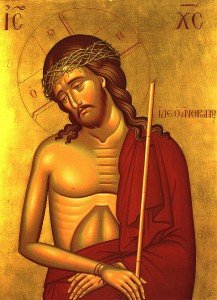Our Church presents us with an array of themes based chiefly on the last days of Jesus’ earthly life during the first part of Great and Holy Week. The story of the Passion, as recorded in the Gospels, is preceded by a series of incidents located in Jerusalem and a collection of parables, sayings and discourses centered on Jesus’ divine sonship, the kingdom of God, the Parousia, and Jesus’ castigation of the hypocrisy and dark motives of the religious leaders. The observances of the first three days of Great Week are rooted in these incidents. The first three days constitute a single liturgical unit. They have the same cycle and system of daily prayer, that is the Hours which include Matins (Morning Prayer) and Vespers (Evening Prayer). The Scripture lessons, hymns, commemorations, and ceremonials that make up the festal elements in the respective services of the cycle highlight significant aspects of salvation history, by calling to mind the events that anticipated the Passion and by proclaiming the inevitability and significance of the Parousia.
 The Matins of each of these days is called the Service of the Bridegroom. The name comes from the central figure in the well-known parable of the ten virgins. This title of Bridegroom suggests the intimacy of love. It is not without significance that the kingdom of God is compared to a bridal feast and chamber. The Christ of the Passion is the divine Bridegroom of the Church. The imagery connotes the final union of the Lover and the beloved. Indeed the title Bridegroom suggests the Parousia.
The Matins of each of these days is called the Service of the Bridegroom. The name comes from the central figure in the well-known parable of the ten virgins. This title of Bridegroom suggests the intimacy of love. It is not without significance that the kingdom of God is compared to a bridal feast and chamber. The Christ of the Passion is the divine Bridegroom of the Church. The imagery connotes the final union of the Lover and the beloved. Indeed the title Bridegroom suggests the Parousia.
The Fathers of the Church saw this parable as related to the Second Coming. It is associated with the need for spiritual vigilance and preparedness, by which we are enabled to keep the divine commandments and receive the blessings of the age to come.
The tropar “Behold the Bridegroom comes in the middle of the night…”, which is sung at the beginning of Matins on Great and Holy Monday, Tuesday and Wednesday, exhorts the Church to this essential expectation of watching and waiting for the Lord, who will come again to bring His beloved people back to the Father’s home.
It must be remembered that the Church, the New Israel, has always been seen as the Bride of God, Who is the true Bridegroom. Think about the type of intimate relationship that the Church envisions for us with our God.
